What is Sgraffito Pottery? Definition, History & Buying Guide
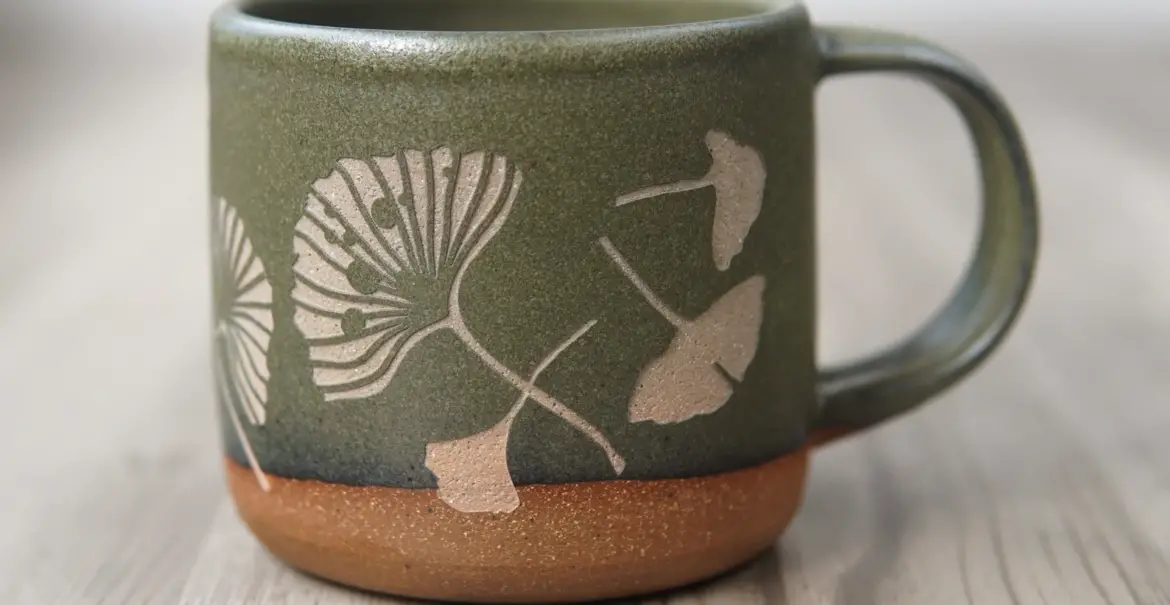
If you’ve ever seen a piece of pottery with intricate designs or patterns, then you’ve seen sgraffito. This timeless technique is used to decorate ceramics and other vessels and has been around for centuries.
Sgraffito pottery is a type of pottery that features decorative designs created by scratching the clay surface before it is glazed and fired. It dates back to ancient times and has been used worldwide in many cultures, often as decorations on vases, tiles and other household objects.
Let’s take a look at the definition, history, and tools associated with this popular style of pottery.
Table of Contents
Definition of Sgraffito Pottery
Sgraffito is an Italian term meaning “to scratch”. It involves scratching away layers of colored slip (slip is a liquid clay mixture) to reveal the bare clay underneath.
The result is an intricate design that often features contrasting colors. This technique originated in Italy during the Renaissance period and quickly spread throughout Europe and beyond.
History of Sgraffito Pottery
The use of sgraffito dates back centuries, though it was most widely used in Italy during the Middle Ages and Renaissance periods.
During this time, artisans would use sgraffito to decorate ceramic tiles, plates, mugs, vases, jugs, and any other type of pottery they could get their hands on!
The designs were often based on geometric shapes or featured natural motifs such as birds or flowers. Today, sgraffito is still widely practiced by potters worldwide, who use this technique to create beautiful pieces for both decorative and functional purposes.
Tools Used for Sgraffito Pottery
The tools used for creating sgraffito designs depend on the desired outcome. For example, if a potter wants to create a fine line drawing or intricate pattern, they may opt for an X-Acto knife or even a dental pick to get into tight corners.
On the other hand, if they are looking for more abstract designs, they may choose to use loop tools or flat knives, which can help them carve out large areas quickly without worrying about precision lines.
After allowing the glaze to dry, you can then begin the carving process by using tools such as needles, razor blades, or rubber tips to carve through the top coat in order to reveal the contrasting base color beneath.
Ultimately it all comes down to personal preference when it comes to choosing the right tool for your project.
Is Sgraffito pottery valuable?
In recent years, demand for this type of pottery has increased significantly due to its ornate beauty and intricate designs, making it highly sought after. As a result, sgraffito pottery can be quite valuable depending on its age, style, and condition.
Where to Buy Sgraffito Pottery?
Sgraffito pottery is an intricate and timeless type of art that has been around for centuries. On Etsy, you can find a variety of sgraffito pottery pieces including vases, plates, mugs, jugs, tiles and other household items.
These pieces are handmade by talented artisans who specialize in creating intricate and beautiful designs. Many of these pieces can also be personalized with initials or names, making them perfect gifts for loved ones.
So if you’re looking for an exquisite piece of pottery, check out Etsy to find a unique sgraffito piece that is sure to impress!
Bowl in blue with tulip sgraffito
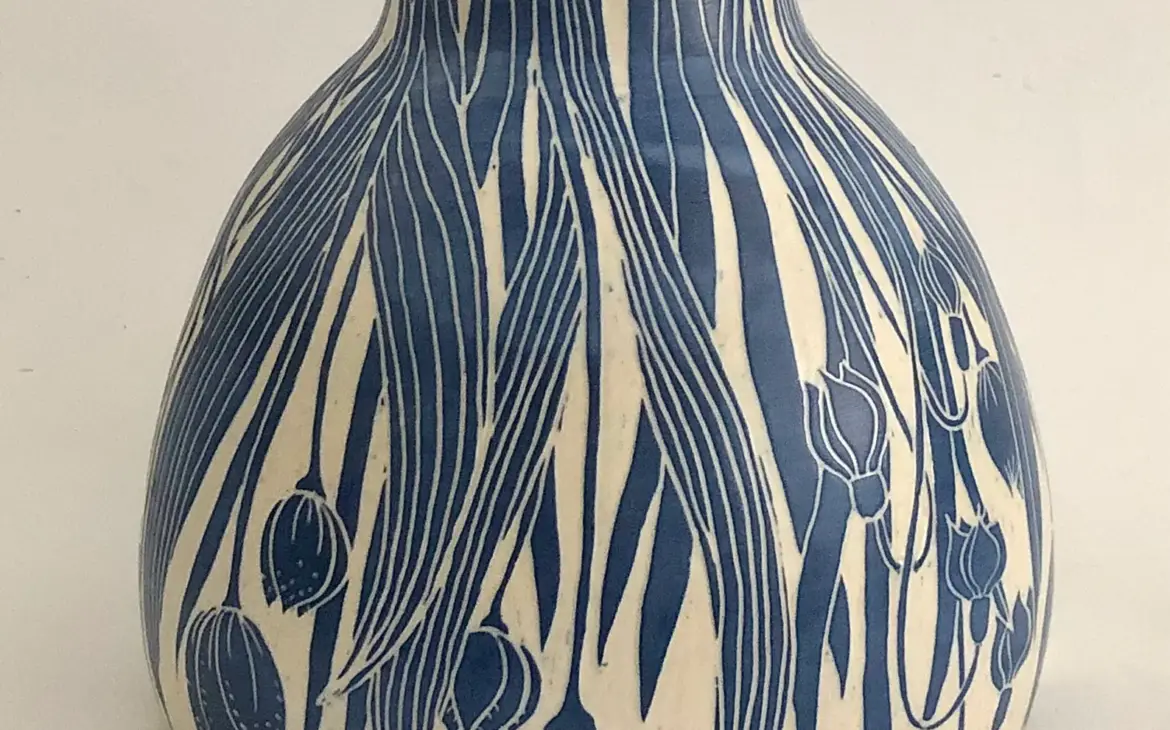
Ceramic Wall Planter / Pottery / Succulent Pot
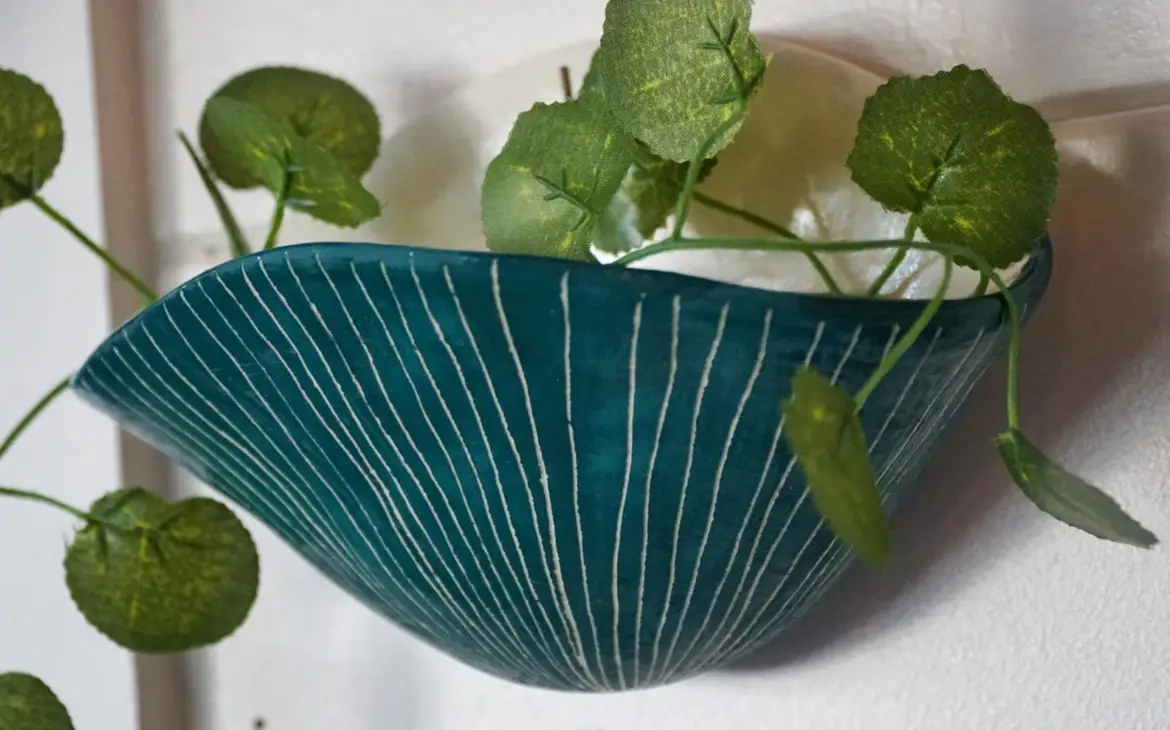
Ceramic suspension Ukrainian ceramics
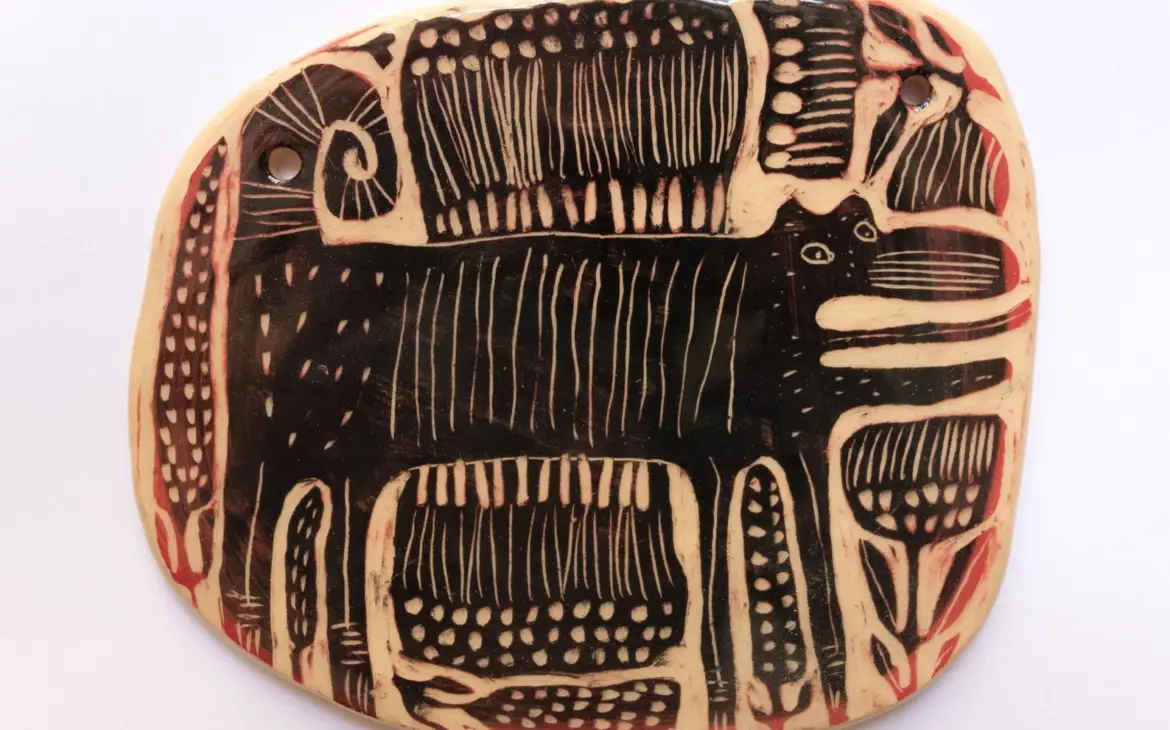
Ginkgo Leaves Mug – floral rustic handmade pottery
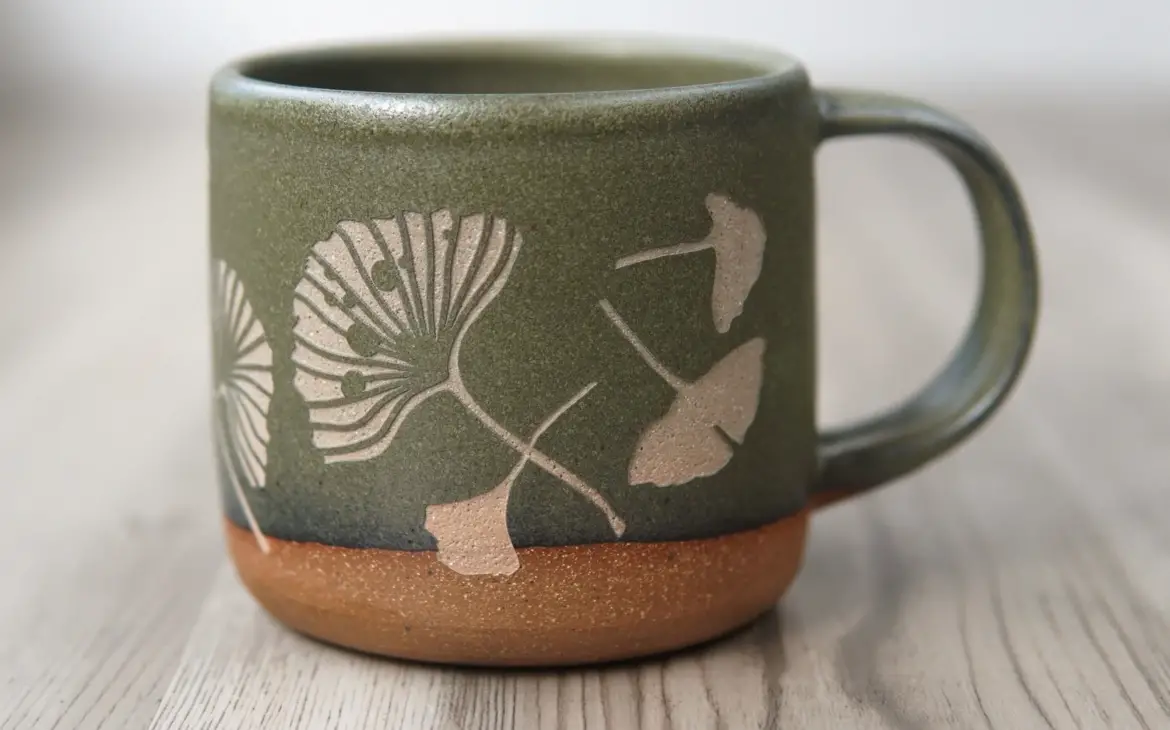
FAQ: Sgraffito Ceramics
How to create sgraffito on clay?
To create a sgraffito on clay, you’ll need to start with a piece of formed and dried clay. You can use either a bisqued or greenware version of the clay. Once you have your desired shape and size, you will need to apply a layer of underglaze.
This will give your sgraffito a vibrant base color when complete. After allowing the glaze to dry, you can then begin the carving process by using either tools such as needles, razor blades or rubber tips to carve through the top coat in order to reveal the contrasting base color beneath. When complete, finish off with a clear glaze for added protection before firing in a kiln.
How dry does clay need to be for sgraffito?
Leather-dry
How many coats of underglaze do you need for sgraffito?
Generally, you will need two coats of underglaze for sgraffito. The first coat acts as the base to provide vibrant color and contrast when carving through the second layer.
After allowing the glaze to dry, you can then begin to carve through the top coat in order to reveal this contrasting base beneath.
To ensure a smooth finish, it helps to use a small brush or foam applicator when applying the coats of glaze.
What is the difference between sgraffito and Mishima ceramics?
The main difference between sgraffito and Mishima ceramics is the technique used to achieve the desired effect.
Sgraffito uses carving tools to create a textured surface that reveals contrasting colors beneath, while Mishima ceramics uses thin layers of color which are deliberately placed in order to produce intricate patterns.
Both techniques can be applied to either clay (greenware or bisqued) or slip-casting vessels, giving you the option to choose a unique look for your project.
Conclusion
Sgraffito pottery has been around for centuries and continues to be popular among professional potters and hobbyists alike! This technique allows you to create intricate designs using contrasting colored slips that can be further embellished with additional details if desired.
With the right tools in hand, you can unleash your creativity and make some truly unique pieces that will surely stand out in any room!
Whether you’re just starting out in pottery or have been practicing it for years, give sgraffito a try – you won’t regret it!

